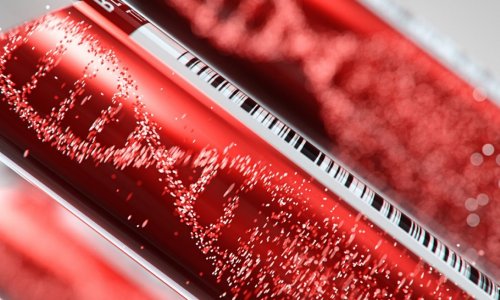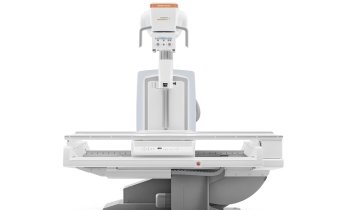Radiofrequency Ablation: Minimally invasive and flexible
Tumour ablation - and Radiofrequency (RF) ablation in particular - is getting more and more important in oncology. The therapy option offers benefits in terms of costs, ease of set-up and flexibility so that experts see the need to expand the applications of it.
"Tumour ablation is a millimetre-precise technique used to destroy small tumours," Alice Gillams of the University College Hospital (London, UK) told the meeting delegates of the International Cancer Imaging Society´s Annual Teaching Course in Bath, UK. "The features that make it special and effective are that it's minimally invasive, offers low morbidity and negligible mortality, doesn't affect normal tissue and doesn't create second tumours."
She further explained that while the technique is accepted as a first-line treatment in certain, limited applications, there's increasing evidence that it could also play an important role in treating diseases such as liver metastases, renal carcinoma, inoperable lung tumours and bone tumours.
Targeted treatment
Gillams initially addressed the treatment of colorectal liver metastases - a common metastatic lesion, but one in which only a limited number of patients (10-20%) are amenable to resection. The remaining cases can be treated using RF ablation, with suitable indications including: one tumour of up to 7 cm in diameter; five or less tumours of no more than 5 cm, or up to nine smaller tumours. For larger lesions, it's also possible to combine resection and RF ablation.
In a study of 167 patients with colorectal liver metastases treated with RF ablation, Gillams and colleagues observed a five-year survival rate of 30% (for patients with up to five lesions, with a diameter of 5 cm or less, and no extra-hepatic disease). This result is comparable to the five-year survival rate seen with operable patients, which ranges between 25 and 39%. More recently, the team used RF ablation to treat a series of more than 300 patients with similar indications and noted a five-year survival rate of 24%.
"Where you can resect, you do," Gillams explained. "But there are a lot of patients with limited metastatic disease who can't have resection and where RF ablation can destroy substantial areas of tumours. We are very good at small-volume disease, we are not very good at large-volume tumours."
She also cited the CLOCC trial, in which patients with unresectable liver metastases were randomized to receive either chemotherapy or chemotherapy plus RF ablation. Interim results presented earlier this year reported progression-free survival times of 10 and 16.8 months for the chemotherapy and chemotherapy-plus-ablation arms, respectively. "Early analysis shows the advantage of RF ablation for patients with inoperable liver metastases," said Gillams, noting that neoadjuvent chemotherapy can downsize lesions, thereby increasing the number of patients that can be treated.
Patients with the primary liver cancer hepatocellular carcinoma (HCC) are generally even less tolerant to interventions and surgery is not usually suitable. Originally, such patients were treated using percutaneous ethanol injection, but Gillams says that RF ablation is now accepted as the first line of treatment in patients with limited-volume HCC. "For HCC, if you can't transplant, you should choose ablation for patients with small-volume disease."
Function sparing
Another area where tumour ablation could prove particularly beneficial is renal-cell carcinoma. There's been an increase in the incidental early detection of this disease in patients being imaged for other reasons, but urologists are not agreed on the best treatment approach. "Again, lesion size is the most important factor, with ablation treating small [less than 3.5 cm] tumours very well," Gillams explained. "Location also plays a role, with central lesions harder to treat."
Both RF ablation and cryotherapy are used, with similar efficacy. Gillams notes that renal ablation is extremely safe, with complication rates of a just few percent for RF ablation. This figure is slightly higher for cryoablation due to the larger probe size, but still compares favourably with alternatives such as partial nephrectomy, which has a complication rate of 20-30%.
The real gain with tumour ablation is its impact on renal function. Even moderate degrees of renal failure can significantly impact upon the patient. Gillams cited one study comparing surgery with RF ablation in which renal function was preserved in 95.2% of patients undergoing ablation, compared with 70.7% of those receiving surgery. She points out that RF ablation is accepted for certain groups of patients, and that some urologists are suggesting expanding the technique to operable cases.
Finally, Gillams took a look at the use of ablation for treating cancers of the lung, which she suggests represents "the perfect ablation location", as well as likely being the largest growth area in ablation over the next few years. Again, one key benefit of tumour ablation is preserving of function.
"If you want to carry out a procedure that'll preserve parenchyma, RF ablation is the way to go," she explained. Ablation is generally effective for inoperable but limited lung metastases - up to five tumours (per lung) of less than 3.5 cm in diameter - and peripheral tumours are easier to treat. Any larger and an adjunct is required.
"Primary lung cancer is more of a challenge," Gillams added. "But ablation is the optimal, minimally-invasive, maximum-parenchymal-preserving treatment." Perhaps the most promising option here, she suggests, could be a combination of RF and radiotherapy, which would likely be more powerful than either used alone.
She concluded by suggesting that use of ablation in multiple organs could be another growth area. "Its precision, repeatability, maximum-functional-sparing and the ability to combine it with other therapies, gives RF ablation a niche place in cancer therapy."
Source: MedicalPhysicsWeb
14.10.2008











